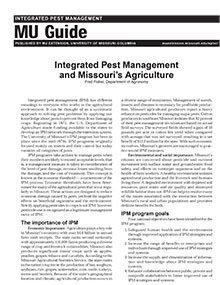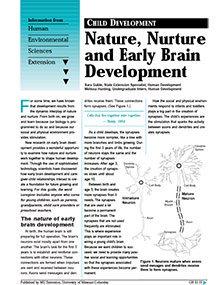

Nature, Nurture and Early Brain Development
Reviewed
Explore how early brain development is influenced by both genetics and environment, emphasizing the importance of caregiver interactions and experiences.
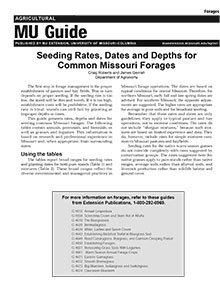
Seeding Rates, Dates and Depths for Common Missouri Forages
Reviewed
Visit our site for our resource on Seeding Rates, Dates and Depths for Common Missouri Forages.
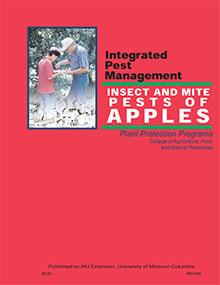
Insect and Mite Pests of Apples
New
Editor's note
The following abstract describes a publication that is available only as a downloadable PDF.
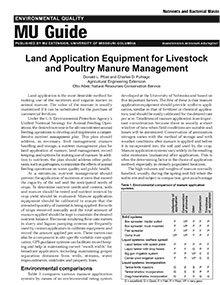
Land Application Equipment for Livestock and Poultry Manure Management
New
Effective land application of livestock and poultry manure maximizes nutrient use and minimizes environmental impact.
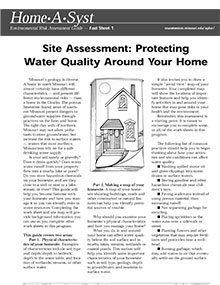
Site Assessment: Protecting Water Quality Around Your Home (Fact Sheet)
New
Learn how your home's features and activities impact water quality. Complete a site assessment to identify and mitigate environmental risks.
How to Manage and Control Storm Water Runoff (Work Sheet)
New
Assess storm water runoff risks and learn strategies to reduce pollution through practical steps for managing runoff effectively.
Household Wastewater: Septic Systems and Other Treatment Methods (Fact Sheet)
New
Learn how to maintain your septic system, reduce pollution risks, and protect water quality with practical tips on design, maintenance, and wastewater inputs.
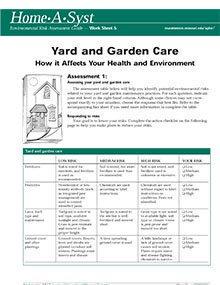
Yard and Garden Care: How It Affects Your Health and Environment (Work Sheet)
New
Assess how your yard and garden care practices impact your health and the environment. Use this worksheet to identify risks and plan improvements.
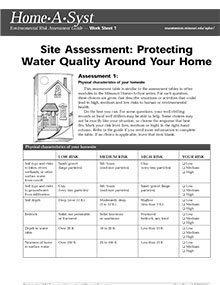
Site Assessment: Protecting Water Quality Around Your Home (Work Sheet)
New
Assess your home's water quality risks with this guide and worksheet. Identify factors that impact water safety and learn how to mitigate environmental risks.
Drinking Water Well Management (Fact Sheet)
New
The publication provides guidance on managing private drinking water wells in Missouri to prevent contamination from bacteria and nitrates.
Household Wastewater: Septic Systems and Other Treatment Methods (Work Sheet)
New
Use this worksheet to assess risks related to septic system design, location, maintenance, and inputs to protect household wastewater systems.

Promoting Family Strengths
Reviewed
Learn key traits that make families strong, including communication, appreciation, commitment, and connection to community.
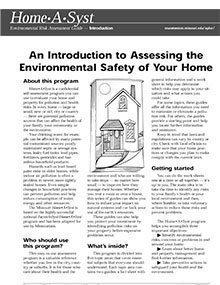
An Introduction to Assessing the Environmental Safety of Your Home
New
Use the Home-A-Syst program to assess and manage environmental risks at your home, from drinking water quality to indoor air pollution.
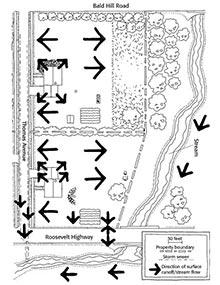
How to Manage and Control Storm Water Runoff (Fact Sheet)
New
Learn effective strategies to manage stormwater runoff, reduce pollutants, and implement landscaping practices to protect environmental quality.
Drinking Water Well Management (Work Sheet)
New
Assess risks related to your drinking water well location, construction, maintenance, and water quality to ensure safe and reliable water sources.
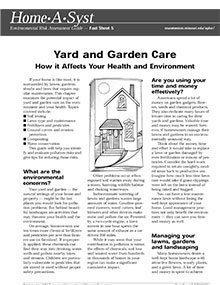
Yard and Garden Care: How It Affects Your Health and Environment (Fact Sheet)
New
Discover sustainable yard care practices to safeguard health and the environment, covering soil testing, composting, and water conservation.
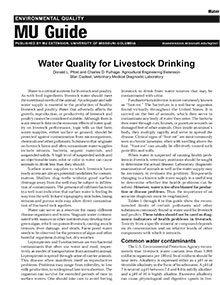
Water Quality for Livestock Drinking
New
Water is a critical nutrient for livestock and poultry. Learn how to provide an adequate and safe water supply for livestock and poultry in this guide.
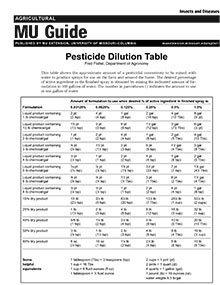
Pesticide Dilution Table
Reviewed
Find pesticide dilution guidelines for farm and home use, including calculations for different concentrations and spray volumes.
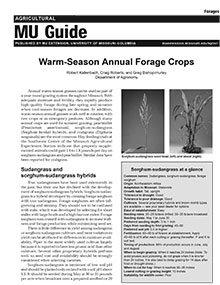
Warm-Season Annual Forage Crops
Revised
Annual warm-season grasses can be used as part of a year-round grazing system in Missouri. Visit our site to learn about Warm-Season Annual Forage Crops.
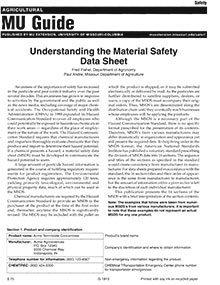
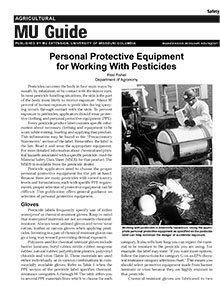
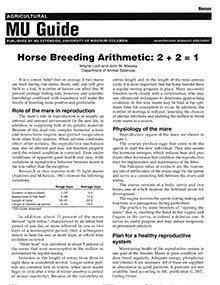
Horse Breeding Arithmetic: 2 + 2 = 1
Reviewed
Explore factors influencing equine breeding success, including mare physiology, estrus cycles, and management practices to improve foaling rates.
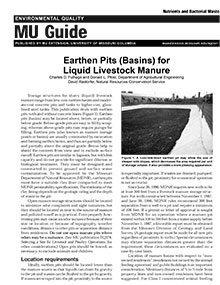
Earthen Pits (Basins) for Liquid Livestock Manure
New
Earthen pits for liquid livestock manure are cost-effective storage solutions that require proper design and construction to prevent environmental contamination.
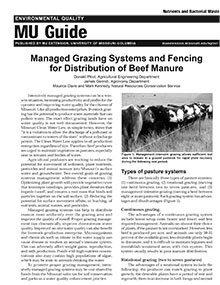
Managed Grazing Systems and Fencing for Distribution of Beef
New
Effective grazing management enhances pasture productivity and water quality by optimizing plant growth and nutrient distribution.
